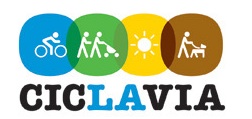Bus stations provide an open platform for layering multiple sustainable technologies in a single location. Installing photovoltaic panels on top of bus shelter canopies is one of the most common practices of sustainable bus shelter design. Some cities are also beginning to explore the possibility of using bus shelters to capture and manage storm water.
 |
| Solar-powered bus shelter in San Francisco |
 |
| Solar panels on bus shelter canopy in San Francisco |
To understand the potential for leveraging bus shelters as a way to advance sustainability in Los Angeles, consider that Metro operates 15,967 bus stops throughout its service area. If the transit authority built bus shelters similar to those being used in Corona, which use roof top solar panels to feed 1,748 kilowatt-hours of electricity per year into the grid, it could generate roughly 27,910,316 kWh per year of energy. That's enough energy to power approximately 4,560 homes.
15,967 bus stops x 1,748kWh/bus stop = 27,910,316 kWh
27,910,316 kWh/6,120 kWh per LADWP res. customer = 4,560 households
15,967 bus stops x 1,748kWh/bus stop = 27,910,316 kWh
27,910,316 kWh/6,120 kWh per LADWP res. customer = 4,560 households
With nearly sixteen-thousand bus stops in the Metro system, there's a tremendous opportunity to use these sites for producing renewable energy, showcasing local artists and providing other socially valuable services like wifi or way-finding information. Given DWP's target for renewable energy production (35% by 2030), the demand for renewable energy in Los Angeles is high and as local capacity for renewable energy production increases, there is less need for running expensive high powered transmission lines through sensitive environmental habitat.
Clearly Los Angeles could be doing more to deploy its own contextually sensitive design for sustainable bus shelters and leverage such a program to advance additional co-benefits for the region: "green" its transportation system, decrease carbon dioxide emissions, reduce storm water runoff, create jobs for the manufacturing and installation of new sustainable bus shelters, expand free wifi coverage, showcase local arts and culture, and enhance the dissemination of important public information.
Sources:
Sources:
- Renewable Energy World, "City of Corona Turns Bus Shelter into Mini Power Plant"

